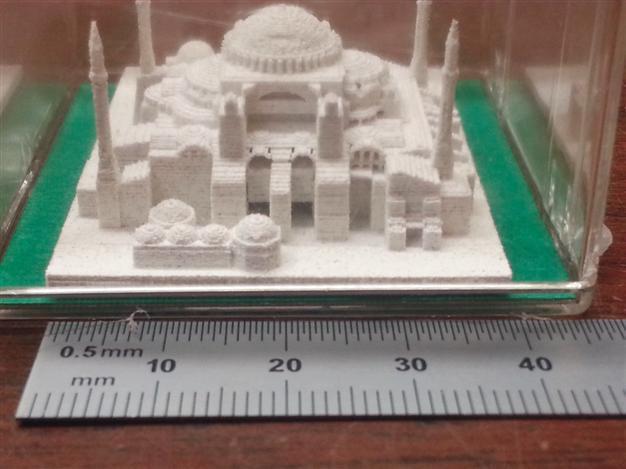Old 3D print of Hagia Sophia emerges
ISTANBUL

The 3D print model of the Hagia Sophia was printed by the original MIT 3D printing lab in the late 1990s. It is now owned by a 3D print enthusiast.
In the 1990s Professor Ely Sachs of the Massachusetts Institute of Technology (MIT) was the first person to coin the phrase “3D printing.” Utilizing a printer, which worked with alumina powder and a binding agent, several prints were created in surprising detail for the mid-1990s. Most of these prints were lost, but one has recently emerged, a 3D print of the Hagia Sophia.The actual print, which measures just four centimeters across and depicts the nearly 1,500-year-old building in Istanbul, was given to a man named Branden Gunn, who works in 3D printing and runs the blog Engunneer. He was given the object by Jim Serdy, who worked with Sachs at MIT in 1990s.
Printed in original MIT 3D printing lab
“We were actually at a company beach party when I was talking with Jim about 3D printing in general, and he went to get the model for me from his car,” Gunn told 3DPrint.com when talking about the old 3D print of the Hagia Sophia. “I was not expecting it as a gift,” he added.
The 3D print model of the Hagia Sophia was printed by the original MIT 3D printing lab in the late 1990s. The model itself has features in the 50-100 micron size range, printed in Alumina, and fired into a ceramic.
The model features the internal geometry of the structure as well. The printer that made the model can be seen at the MIT Museum. Serdy said very few similar prints were done at MIT, and even fewer remain in existence today.
















